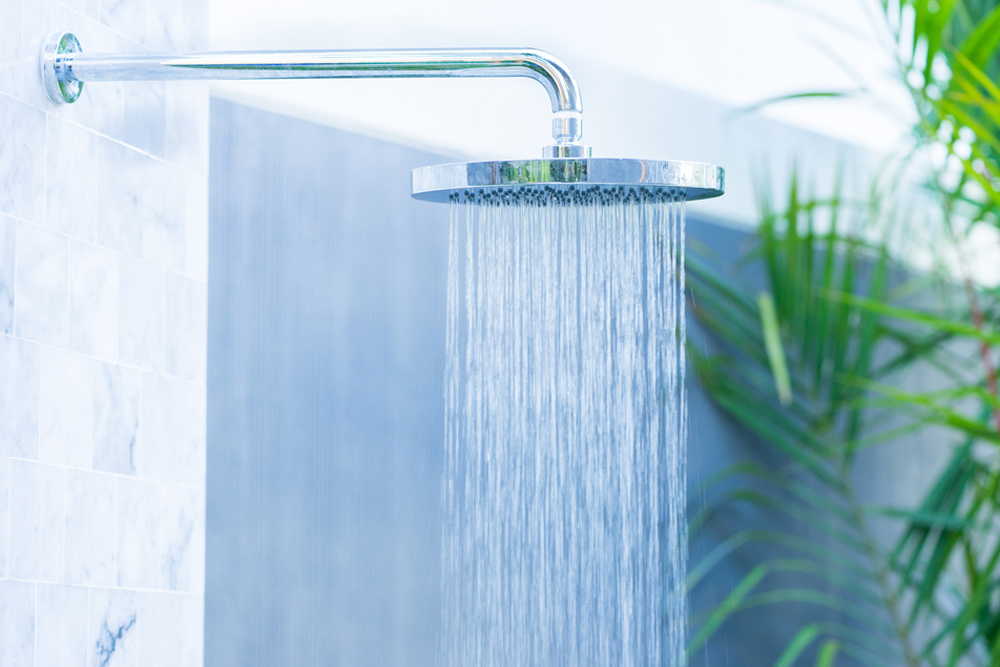Cold water immersion has steadily gained popularity in recent years, but is far from a trend. People have been using cold water for its therapeutic effects for thousands of years. In fact, interest in it for medicinal purposes dates back to the fourth century BCE, when the Greek physician Hippocrates documented using cold water for pain relief.
Many cultures have also had a long history of cold-water therapy for physical and mental wellness. The Nordic cultures of Finland, Sweden, and Iceland practice vinterbadning, also known as winter swimming. The combination of cold-water plunges balanced with immersion in hot springs has a long history in Japan, and is still practiced today. As well, many indigenous cultures have incorporated cold-water therapy as part of ritual and spiritual practices.
By the 20th century, medical professionals began to seriously examine the benefits of cold-water immersion, specifically how exposure to cold water affects blood pressure. Later, in the 1960s, they began to investigate the benefits for exercise recovery, an area of study that enjoyed a resurgence in the late 1990s and well into the new millennium. Through this research, scientists ultimately recommended guidelines for cold-water immersion: 50 to 59°F for 10 to 15 minutes.
Recently, though, research has discovered that you don’t have to immerse yourself fully in cold water to experience its benefits. A cold morning shower is a quick and accessible way for anyone to experience the effects of cold-water therapy. Starting your day by showering with water temperature below 60°F can boost your physical and mental health and may even offer some long-term health benefits. Plus, it’s a faster and more convenient alternative to cold-water immersion, one that you can easily fit into your morning routine.
Below are six reasons why you should consider a cold shower in the morning:
It helps wake you up quicker in the morning
Research has found that whole-body exposure to cold water triggers the release of several neurotransmitters, including dopamine and norepinephrine, that play key roles in arousal, attention, and motivation. Starting your day with a cold shower can help you stay awake, alert, and ready to better manage your day.
It improves daily mood and energy
A cold morning shower can improve your energy and mood in two ways. First, in addition to helping you wake up in the morning, dopamine and norepinephrine both impact mood. In fact, research has shown that cold showers may have such a beneficial impact on mood that they can improve the symptoms of depression.
Cold showers also stimulate the cold receptors on the skin, causing a surge of electrical impulses in the brain. This jolt of activity can help boost your mood and start your day with a more positive outlook.
It improves circulation
Cold water makes the body work harder to maintain its core temperature; the blood vessels constrict, delivering more oxygen-rich blood. Not only can this help get your body and mind going in the morning, but it can also have long-term health benefits. Research shows that regular cold showers can improve overall circulation, which can lower the risk of heart attack and stroke.
It boosts immunity
A recent study found that regular cold shower exposure increases the production of antibodies and T cells. Both are important to your overall immune health. Antibodies bind to toxins or antigens to neutralize and mark them for destruction, while T cells recognize and eliminate infected cells within the body. In other words, cold showers can enhance the immune system’s ability to eliminate invaders hiding in both cells and body fluids, providing robust immune protection.
It improves attention and focus
Increased neurotransmitters that improve attention and motivation combined with greater blood flow to the brain can help you dial in focus and increased mental clarity, helping you to be more productive at work or school, or even more focused and productive with other daily tasks.
It can increase metabolism over time
Cold showers may increase brown fat activity. Brown fat produces heat and energy to warm the body, is activated by cold temperatures, and also produces heat by breaking down blood sugar and fat cells. Brown fat also helps control insulin levels. All of these factors can have a positive effect on overall metabolism. While these metabolic changes may not directly lead to significant weight loss, research has found they may have considerable metabolic benefits, including protecting against cardiovascular disease and diabetes.
Wiseman Health Take-Home Points
- Taking a cold shower in the morning is an easy, inexpensive, and accessible way for everyone to get the benefits of daily or weekly cold-water therapy.
- There is no trick to this technique. Just turn your water on the coldest setting and immerse yourself under the water — head and body. Cold showers are usually a lot quicker than hot showers. In colder locations and in the winter, the water might be too cold, so adjust the temperature accordingly.
- Cold showers don’t have to be long showers. Even as quick as 30–60 seconds provides therapeutic effects but best practice is to aim for 1–5 minutes.
- It takes some time to get used to this approach, so if needed, you can start with warmer temperatures and slowly adjust to colder temperatures as you acclimate. Gradually decrease the temperature as you improve your cold tolerance. Deep breathing can help with the initial shock of cold water.
- Many people like to start off with a cold shower for a few minutes and then end the bathing portion with a warm shower. There are others who start off with a warm shower and end with a quick cold shower. Experiment with what is best for you.
- Try to avoid overly long, hot showers for most mornings. Hot showers drain energy reserves, so it’s best practice to start the day out with a cold or lukewarm shower. Hot showers at night, however, are very therapeutic before bed, as they help relax and prepare you for better sleep.
- Of course, there is a place for a long, hot shower in your morning routine, especially on cold winter days. However, try to use quick bursts of cold showers on the days you need to be more productive, such as during the week.
- From a larger perspective, cold showers are a form of hormesis: A phenomenon in which low doses of a substance or stressor have a beneficial effect on the body by acclimating the body to better stress tolerance. Other natural examples of hormetic stressors that help promote strength and adaptive responses in the body include exercise, heat stress (e.g., sauna use), fasting, among many others.
Editor’s Note: This article was originally published on May 28, 2025
Allan, R., Malone, J., Alexander, J., Vorajee, S., Ihsan, M., Gregson, W., Kwiecien, S., & Mawhinney, C. (2022). Cold for centuries: A brief history of cryo therapies to improve health, injury and post-exercise recovery. European Journal of Applied Physiology, 122(5), 1153. https://doi.org/10.1007/s00421-022-04915-5
6 cold shower benefits to consider. (January 25, 2023) UCLA Health. Retrieved April 23, 2025, from https://www.uclahealth.org/news/article/6-cold-shower-benefits-consider
El-Ansary, M. R., El-Ansary, A. R., Said, S. M., & Abdel-Hakeem, M. A. (2024). Regular cold shower exposure modulates humoral and cell-mediated immunity in healthy individuals. Journal of Thermal Biology, 125, 103971. https://doi.org/10.1016/j.jtherbio.2024.103971
Espeland, D., & Mercer, J. B. (2022). Health effects of voluntary exposure to cold water – a continuing subject of debate. International Journal of Circumpolar Health, 81(1), 2111789. https://doi.org/10.1080/22423982.2022.2111789
Brown fat, brown adipose tissue: What it is & what it means. (August 7, 2022) Cleveland Clinic. Retrieved April 20, 2025, from https://my.clevelandclinic.org/health/body/24015-brown-fat
Shevchuk, N. A. (2008). Adapted cold shower as a potential treatment for depression. Medical Hypotheses, 70(5), 995-1001. https://doi.org/10.1016/j.mehy.2007.04.052
Yankouskaya, A., Williamson, R., Stacey, C., Totman, J. J., & Massey, H. (2023). Short-Term Head-Out Whole-Body Cold-Water Immersion Facilitates Positive Affect and Increases Interaction between Large-Scale Brain Networks. Biology, 12(2), 211. https://doi.org/10.3390/biology12020211

